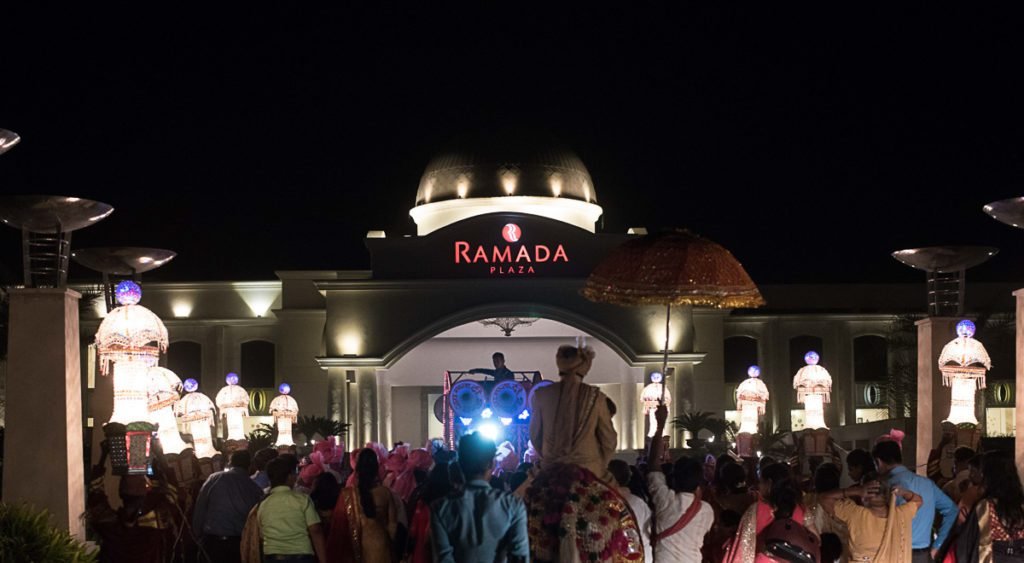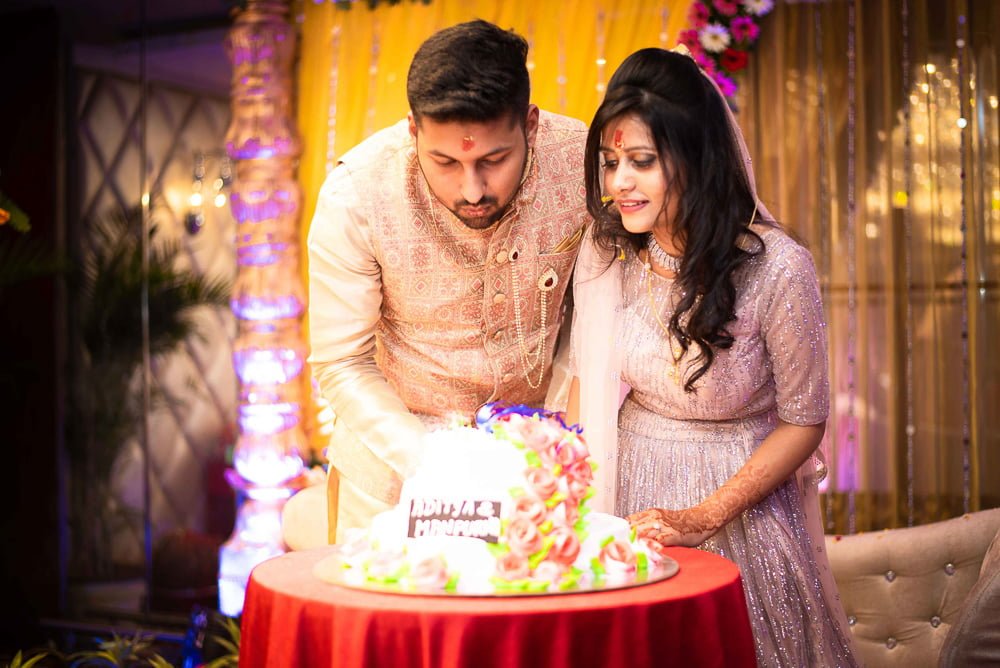Wedding Photographers in Lucknow | Random Clicks Photography
Capturing Happiness.
A Comprehensive Guide to Jain Wedding Customs.
Jainism, an ancient Indian religion rooted in non-violence and spirituality, encompasses a rich tapestry of wedding rituals. Jain weddings, known as Jain vivaha, are characterised by their adherence to Jain principles and traditions. In this article, we delve into the intricacies of Jain pre-wedding, wedding, and post-wedding rituals. Shedding light on their significance and symbolism. From the engagement ceremony to the grand reception, each ritual holds deep cultural and religious meaning. Join us as we explore the unique customs that make Jain weddings a truly awe-inspiring celebration.
India, known for its remarkable diversity, is a land where various cultures and customs coexist harmoniously, making it truly unique. With a multitude of religions, each wedding celebration showcases distinct rituals and ceremonies that add to the tapestry of traditions. Jainism, a religion renowned for its emphasis on simplicity. It contributes its own unique charm to the rich cultural mosaic of India’s matrimonial customs.
The journey towards matrimonial bliss begins with Laghana Lekhan, the engagement ceremony. During this auspicious occasion, the families of the bride and groom come together to formalise the union. A written document, stating the agreement and terms of the marriage, is prepared and signed by both parties. Laghana Lekhan serves as a pivotal step in solidifying the bond between the two families. Setting the stage for the forthcoming nuptial festivities.
Following the engagement, the groom’s family pays a visit to the bride’s house for Lagna Patrika Vachan. This ritual involves the formal announcement of the wedding. Where the groom’s side presents a letter of acceptance to the bride’s family. The letter signifies their consent and commitment to the alliance. Lagna Patrika Vachan strengthens the bond between the families. Fostering harmony and mutual respect as they prepare for the joyous union of their children.
The pre-wedding celebrations kick off with Mehendi and Sangeet ceremonies. Mehendi, a cherished tradition, involves adorning the bride’s hands and feet with intricate henna designs, symbolising beauty, good luck, and fertility. The bride’s female friends and family members also partake in this artistry, fostering a sense of togetherness and celebration.
The Sangeet ceremony is an evening filled with music, dance, and revelry. Relatives and friends gather to celebrate the upcoming union through soulful melodies and captivating performances. The air is charged with joy and enthusiasm as everyone joins in the festivities, creating unforgettable memories.

The wedding day commences with the Baraat, a lively procession where the groom, accompanied by his family and friends, arrives at the wedding venue. The groom is traditionally seated atop a beautifully decorated horse or in a palanquin, symbolising regality and grandeur. The Baraat procession is a vibrant display of merriment and excitement, with music, dancing, and jubilation setting the stage for the auspicious union.

At the wedding venue, the bride awaits the groom’s arrival. As he approaches, the bride’s family warmly welcomes the groom and his entourage. The highlight of this momentous occasion is the Var Mala ceremony, where the bride and groom exchange garlands, symbolising acceptance, love, and respect for each other. This ritual signifies the joining of two souls and the commencement of their journey together as life partners.
Next, the Granthi Bandhan ritual takes place, representing the binding of the couple in holy matrimony. The priest ties the bride and groom’s garments together in a ceremonial knot, symbolizing their eternal commitment and unity.Granthi Bandhan signifies the inseparable bond formed between the couple, where they promise to support and love each other through the ups and downs of life.
As the wedding ceremony nears its culmination, the Kanyavaran ritual takes place. It is an emotional moment where the bride’s parents officially give her away to the groom. The bride’s father places her hand into the groom’s hand, symbolising trust and acceptance. This gesture represents the belief that the groom will take care of the bride and provide her with a loving and supportive home. Kanyavaran symbolises the transition of the bride from her parental home to her husband’s home, marking the beginning of a new chapter in her life.

A Comprehensive Guide to Jain Wedding Customs
In Jain weddings, the seven vows, “Agni ke Saath phere” circumambulation around the sacred fire known as saat phere, play a crucial role in the marriage ceremony. However, it’s important to note that these rituals and vows may vary across different Jain sect and regions. Here is an overview of the saat phere in a Jain wedding, highlighting their significance and the couple’s commitments:
The couple takes their first step together, pledging to uphold the fundamental principles of Jainism, such as non-violence, truthfulness, non-possessiveness, and spiritual growth.
They promise to lead a disciplined life and work towards the welfare of their families, community, and society, embracing their responsibilities with devotion.
Together, they vow to nurture love, respect, and understanding in their relationship, supporting and inspiring each other on their spiritual journeys.
They commit to honouring and cherishing the sacred bond of marriage, seeking strength to overcome challenges and lead a righteous life.
The couple expresses their dedication to a simple and content life, renouncing material desires and attachments in pursuit of spiritual fulfilment.
They pray for spiritual enlightenment and liberation from the cycle of birth and death, embarking on a shared journey towards self-realisation.
Finally, they take the ultimate step, promising unwavering loyalty and devotion to each other, providing support and encouragement as they walk the path of Jain Dharma.
Upon completing the seven vows, the couple seeks blessings from elders and invokes the presence of divine beings, symbolising the sanctity of their union. Jain weddings also emphasise vegetarianism, ahimsa (non-violence), and simplicity throughout the entire wedding ceremony, reflecting the core values of the Jain faith.
This unique Jain wedding ritual, encompassing the saat phere, serves as a powerful reminder of the couple’s commitment to live a life rooted in Jain principles, mutual love, and spiritual growth.
Following the Mangal Pheras, the couple proceeds to the Saptapadi ritual. In this ritual, the bride and groom take seven sacred steps together, representing their journey through the seven vows of marriage. With each step, they make heartfelt promises to support and cherish each other. These vows encompass mutual love, trust, respect, and shared responsibilities. The Saptapadi ritual signifies the foundation of a strong marital bond based on mutual understanding and commitment.

It holds great significance in Jain wedding rituals. After the completion of the wedding ceremony, the groom applies a red vermilion known as sindur on the bride’s hair parting. This act symbolises the bride’s transition into married life and signifies her commitment and loyalty towards her husband. Sindur is considered auspicious and is believed to bring good fortune and long-lasting marital bliss. The application of sindur by the groom is a sacred ritual that strengthens the bond between the couple and marks the beginning of their lifelong journey together. It is a moment filled with love, blessings, and the promise of a harmonious and fulfilling marriage. The vibrant red sindur stands as a visible symbol of a married woman within Jain culture, representing her commitment, devotion, and auspiciousness in her role as a wife.

Is a sacred necklace adorned by the bride in Jain weddings. Composed of black beads on a gold chain, it symbolises the eternal bond between the couple. It represents love, protection, and marital commitment. The groom presents the mangalsutra to the bride during the wedding ceremony, signifying his promise to cherish and protect her. Wearing the mangalsutra is a constant reminder of the sacred vows and unity shared in marriage. It holds deep significance within Jain culture, embodying the essence of a devoted wife and the enduring connection between the couple.

After the wedding ceremony, the Vidai ritual marks the departure of the bride from her parental home. It evokes bittersweet emotions as the bride bids farewell to her family and loved ones. The bride’s parents shower her with blessings, symbolising their support and good wishes for her future. Vidai represents the bride’s transition to her new life as a married woman, as she embarks on a new journey with her husband.
Upon arriving at the groom’s home, the family and relatives welcome the couple with the Griha Pravesh ritual. The groom’s family, along with other relatives, perform a traditional welcome ceremony. The couple steps into their new home. Guided by the auspicious presence of the groom’s mother, who holds a plate with rice and vermilion powder. The couple’s footprints are imprinted on a mixture of rice and vermilion, symbolising the prosperity and blessings bestowed upon them in their new life together.

To culminate the joyous celebrations, a grand reception is often held. Family, friends, and well-wishers gather to celebrate the union of the newlyweds. The reception is an opportunity for the couple to be introduced to extended family members and friends who were unable to attend the wedding ceremony. It is an occasion filled with merriment, music, dance, and delicious food, where the couple receives blessings and good wishes from all those in attendance.
A Comprehensive Guide to Jain Wedding Customs
Jain weddings encompass a beautiful tapestry of pre-wedding, wedding, and post-wedding rituals. These customs, deeply rooted in Jain principles, symbolise love, unity, and spirituality. With their rich symbolism and cultural significance, Jain wedding rituals create an enchanting and unforgettable
Wedding Photography By Atul Ghosh and Vartika Jain
A Comprehensive Guide to Jain Wedding Customs. We intend for the information provided in this article regarding Jain wedding rituals to offer a general overview and understanding. However, it is important to acknowledge that customs and traditions can vary among different Jain communities, regions, and families. Jainism is a diverse religion with various sects and cultural practices. Therefore, we recommend consulting with a Jain religious authority or seeking guidance from an experienced individual within the specific Jain community to obtain accurate and detailed information about the rituals and traditions followed in a Jain wedding. It is always advisable to respect and adhere to the customs and guidelines provided by the respective Jain community when planning or participating in a Jain wedding ceremony.